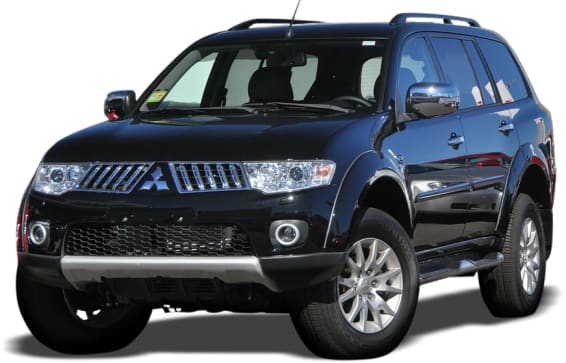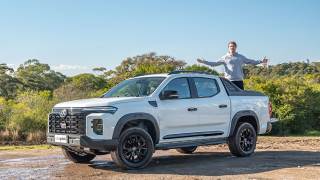
SUVs versus Wagons
The Ford Falcon wagon is dead. The Toyota Camry wagon is gone. Some like the Holden Sportswagon still survive, and there are loyal buyers in both the small-car and luxury classes, but the rising tide of SUVs has washed most station wagons out of showrooms.
The distinction between the traditional sedan-based station wagons and Australia’s new favourite family freighter has become much more blurred in the past decade or so.
However, there are still some important points of difference. And it's worth looking at some of the leading contenders on the rival teams to see what's happening and what works best for you.
A sedan-based wagon is usually lighter than a similarly-sized SUV. This means better fuel economy and lower costs for servicing and tyres. It also sits closer to the bitumen, with a lower centre of gravity, so it’s more agile and stable, especially when cornering or in an emergency manoeuvre.
However, you don’t enjoy the high-and-mighty driving position, with an unimpeded view of the road, that SUV drivers - and women in particular - cite as one of the breed’s major attractions.
Who hasn’t sat in traffic, cursing the SUV blocking your vision? Booming SUV sales indicate more and more people are taking the view that, if I can’t beat ‘em, I may as well join ‘em.
It’s a myth that SUVs are more space-efficient than wagons, however most mid-sized models - including the popular Holden Captiva and Ford's Territory - can come with a couple of extra seats in the back, a feature you no longer find in conventional wagons.
Kids also love an SUV’s elevated seating position because they can enjoy the scenery, whereas many wagons have low seats and high side window sills, which, for nippers, can be like sitting in a hole. So they get unhappy. And we know what happens then...
Whether you choose a sedan-based wagon or an SUV - an Americanism for Sports Utility Vehicle, incidentally - the good news is that affordable family transport, with five star safety, can now also be an enjoyable drive.
Among the wagons, the Commodore VE Series ll Sportwagon, priced from $41,990 for the 190kW, 3.0-litre V6 Omega, is a standout. It looks sensational - which, it must be said, is still a rare thing in wagon world.
Recent improvements to drivetrains, including E85 ethanol fuel compatibility, direct fuel inection and a six-speed automatic - plus a flash new dash with hands-free Bluetooth and audi streaming as standard - have re-written the Commodore's technical resume to 21st century standards.
Around town, the 3.0-litre V6 averages 12.6L/100km in official tests. A big serve of additional grunt in the 3.6-litre V6 SV6 Sportwagon, plus tighter suspension, sports seats and other extras, justifies its $45,790 ask, and with a city average of 13.3L/100km, you’re not savagely penalised at the pump.
Despite the Commodore's appeal, Ford’s Mondeo and the little-known Skoda Superb are the kings of outright space. Behind the driver’s seat, both are as big as the MCG. Given their size, the fuel economy from their 2.0-litre turbodiesel engines is amazing. The 120kW, six-speed automated-manual Mondeo, from $36,840, pulls like a train and averages just 7.7L/100km in town.
The Skoda is VW engineering with a Czech badge, making luxury wagon for half the expected price. The 125kW six-speed automated-manual Superb Ambition is $43,990, with a city average of 8.3L/100km and the 118kW 1.8-litre petrol turbo Ambition, at $40,990, offers respectable performance too, averaging 9.7L/100km.
In the SUV showroom, Ford’s Territory, from $39,890, is still one of the best size/price/performance packages available - especially with the inevitable big discount ahead of the facelifted model - but the all-wheel drive’s 17.6L/100km thirst in town is a major disincentive.
Later this month, a 140kW 2.7-litre V6 turbodiesel engine, which averages 11.6L/100km, goes under the bonnet as part of a major upgrade. It will be worth a test drive.
Kia’s Sorento, a classy, competent seven-seater with a brilliant 2.2-litre, 145kW turbodiesel, starts at $39,999, with a five-year/unlimited kilometre warranty. Around town, it averages 9.5L/100 kilometres.
The five-seater Subaru Outback now has enough interior acreage to keep a family happy. This blue-chip, made-in-Japan SUV starts at $38,490 for the 123kW 2.5-litre petrol (11.5-litres per 100 kilometres), or $40,490 for a 110kW 2.0-litre turbodiesel, in manual only, with a 7.7- litres per 100 kilometre average.
Load Lugger Checklist
- Rear camera: All cars should have one as standard, especially wagons and SUVs. The Sorento’s is a brilliant design, integrated into the rearview mirror.
- Curtain airbags: Essential protection against a side impact. In a seven seater, they should extend to all three rows of seats. In the Territory, they don’t.
- Child restraint anchors: Should be on the back of the rear seat, not in the load floor, or the roof (as in the Outback), where the tether straps get in the way
- Cargo bay: Check that the extended floor is flat when you fold the back seat, and that you don’t have to push the driver’s seat too far forward.
- Row-three seats: In SUVs most are pretty small, suitable for little kids only, or short trips. Check access, which should be easiest from the kerb side.
- Protection: You need some way to secure gear, because in a prang even small objects behind the back seat become lethal missiles. Options include a solid load cover, a net, a roll out mesh barrier, that clips into the roof, or an aftermarket barrier.
Want to go off road ... really off road?
Try these:
- Jeep Grand Cherokee from $45,000. The new Laredo 3.6-litre V6 petrol is great value, but the diesel, due in June, will be a better drive. Hard-core off-roading made easy, and the all-new Grand Cherokee is much improved on the bitumen too.
- Mitsubishi Challenger from $45,000. Lots of Pajero bits in this, with lower starting prices and a competent, if rather coarse, 2.5 turbodiesel. Seven seats from $49,390, a huge cargo bay, and a locking rear differential.
- Toyota Landcruiser Prado from $55,990. It’s a Toyota 4WD, so it’s pricey, but you get bulletproof reliability, unbeatable resale values and smooth, but leisurely, performance from the 3.0-litre turbodiesel.
Pricing guides
Range and Specs
| Vehicle | Specs | Price* | |
|---|---|---|---|
| (4X2) | 2.5L, Diesel, 5 SP AUTO | $13,420 – 17,600 | 2011 Mitsubishi Challenger 2011 (4X2) Pricing and Specs |
| LS (5 Seat) (4x4) | 2.5L, Diesel, 5 SP AUTO | $15,730 – 20,130 | 2011 Mitsubishi Challenger 2011 LS (5 Seat) (4x4) Pricing and Specs |
| LS (7 Seat) (4x4) | 2.5L, Diesel, 5 SP AUTO | $14,630 – 19,250 | 2011 Mitsubishi Challenger 2011 LS (7 Seat) (4x4) Pricing and Specs |
| (4X4) | 2.5L, Diesel, 5 SP AUTO | $12,540 – 16,720 | 2011 Mitsubishi Challenger 2011 (4X4) Pricing and Specs |
$12,999
Lowest price, based on 16 car listings in the last 6 months






